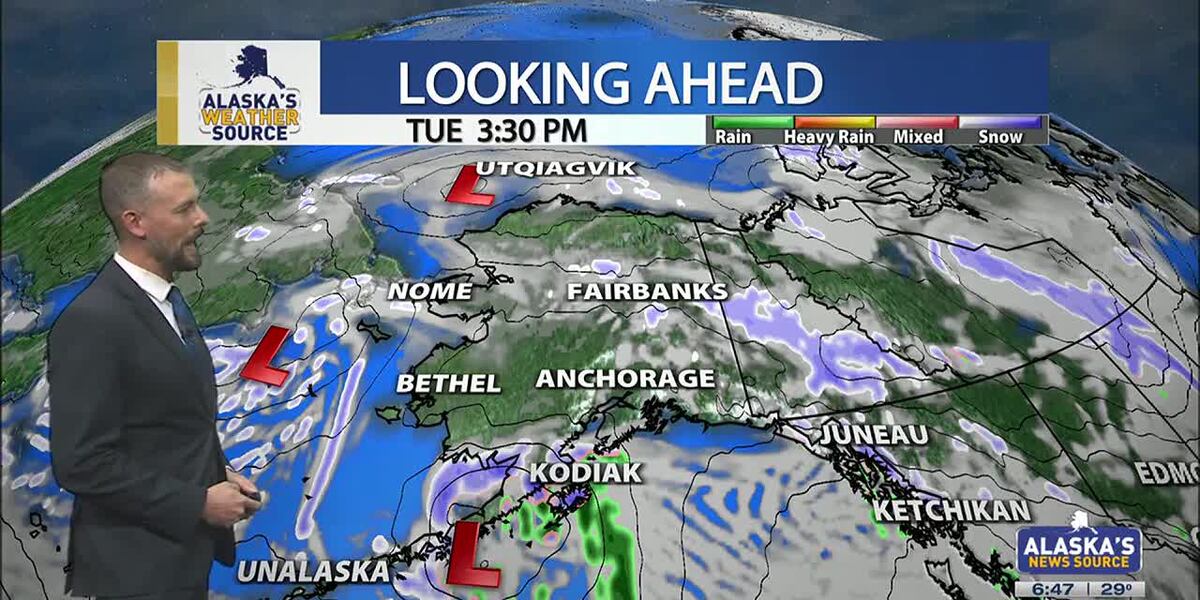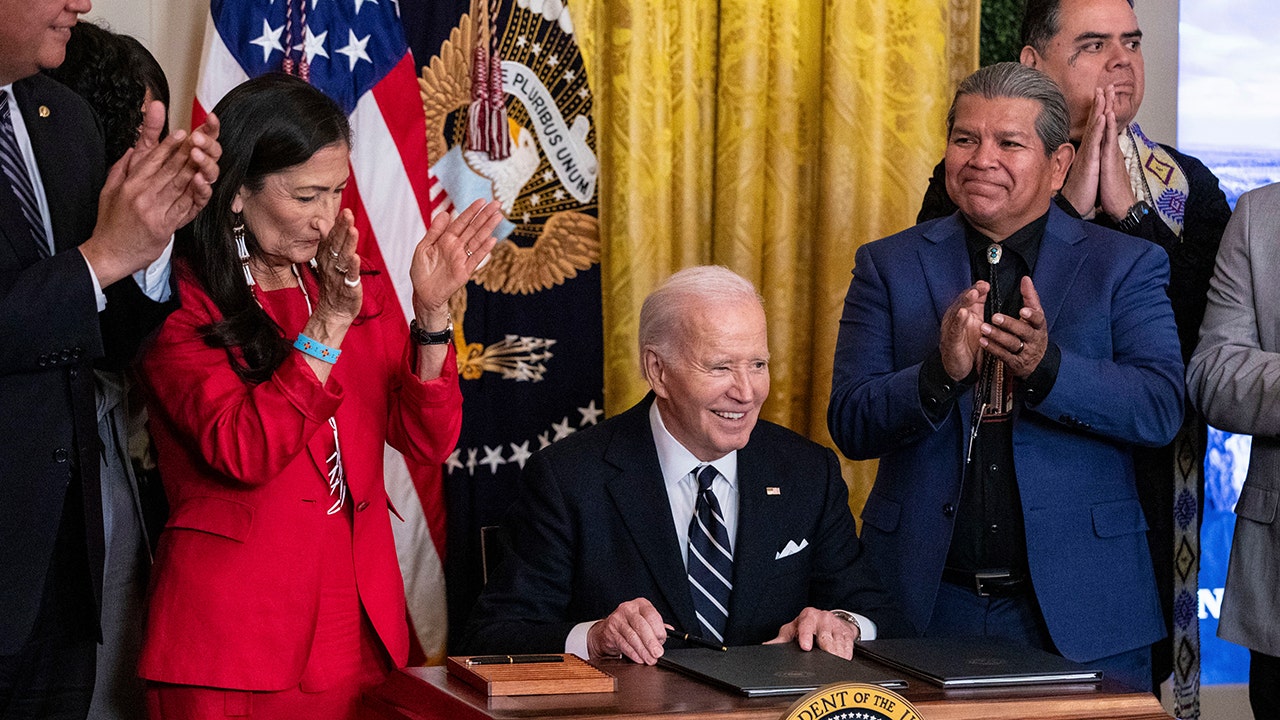Alaska’s public lands will be less accessible than usual during a government shutdown set to begin Sunday.
National parks are slated for closure starting Monday, and access to campgrounds and public-use cabins on federal lands could be impeded, according to contingency plans released by agencies Friday.
New leasing activities for oil and mining that also take place on federal lands in Alaska could be suspended during a lapse in funding. A meeting planned for Fairbanks on Monday, involving an oil and gas leasing program for the Arctic National Wildlife Refuge, will be canceled because of uncertainties related to the shutdown, an official said.
The impacts of a shutdown will be felt in every state, but especially in Alaska, where the federal government owns over 220 million acres — vastly more than in any other state.
Many of those impacts will be felt within the Interior Department, which owns much of the land in the state. It’s home to more than 2,500 employees in Alaska and agencies that oversee an array of activities on federal lands, such as the Bureau of Land Management, the National Park Service and the Fish and Wildlife Service.
Their contingency plans show that most employees will be put on furlough, going without work and pay until the shutdown ends and they receive back pay. The plans show that critical services will continue, such as emergency response, law enforcement and fire suppression.
A current contingency plan for the U.S. Forest Service, part of the Agriculture Department, was not available Friday at the White House website. The Forest Service in Alaska operates the giant Chugach National Forest in Southcentral Alaska and the Tongass National Forest in Southeast Alaska, the largest national forest in the U.S.
[How the impending U.S. government shutdown might impact Alaska]
Spokespeople with the agency did not respond to an email seeking information about the status of Forest Service public-use cabins during a shutdown.
National parks
The National Park Service oversees numerous parks, preserves, monuments and other areas across Alaska, including popular Denali National Park and Preserve, which sees visitors year-round.
But the nation’s parklands and offices will be closed during a shutdown, according to officials with the National Park Service.
“Beginning Monday, Oct. 2, all national parks would close and visitors should expect services to be unavailable,” a spokeswoman with the agency said in an email.
Gates will be locked, visitor centers will shut down and thousands of park rangers will be furloughed, the agency said in a statement.
“Areas that, by their nature, are physically accessible to the public will face significantly reduced visitor services,” the statement said.
At such sites that can’t be closed, staffing levels and services such as restroom maintenance, trash collection and campground operations will vary, the agency says in a nine-page contingency plan. Those services aren’t guaranteed, the plan says.
Jim Adams, head of the National Parks Conservation Association office in Alaska, said the closures will hurt tourism, which will hurt small businesses that cater to tourists. With reduced or no staff, park lands could be damaged from vandalism or misuse, he said.
“A shutdown is bad for people, for Park Service employees and other employees, and it’s bad for local communities,” he said. “Every time there’s a shutdown, parks are injured. But at the same time I wouldn’t want to keep people who need food and subsistence resources out of those parks.”
[Fat Bear Week falls prey to looming government shutdown]
Wildlife refuges
The U.S. Fish and Wildlife Service is looking at closing national wildlife refuges, visitor centers and other operations nationally, its contingency plan shows.
In Alaska, the agency manages 16 refuges covering more than 76 million acres, an area the size of New Mexico.
Its holdings include the Kenai National Wildlife Refuge with its visitor center in Soldotna. That’s the most visited refuge in Alaska, with 14 public-use cabins on nearly 2 million acres.
A spokesman with the agency did not respond to a question Friday about whether public use cabins would be closed during a shutdown.
“No permits may be issued or reviewed; most visitor events will not take place; surveys and habitat restoration activities will be put on hold, and most of the normal work of the Service will be discontinued,” the plan says.
Activities in refuges can continue if they don’t require the presence of a federal employee or contractor, the plan says.
Bureau of Land Management
The Bureau of Land Management, overseeing about 70 million acres in Alaska, said that campgrounds, boat ramps, and other recreation sites will be open during a shutdown, according to its contingency plan. But full services may not be, including restrooms and water systems, its contingency plan says.
“In cases where funds are not available to maintain such services, signs will be posted but visitors may remain at these sites at their own risk,” the agency says.
[Federal government starts notifying employees a shutdown may be imminent]
The agency in Alaska manages the 1-million-acre White Mountains National Recreation Area, an hour’s drive from Fairbanks, as well as several National Conservation Lands units, including the 420-mile Iditarod National Historic Trail.
In Anchorage, the agency’s Campbell Creek Science Center off Elmore Road will be closed during a shutdown, but trails on the 730-acre BLM-managed tract will be open, an employee at the center said Friday.
The Bureau of Land Management warns that a shutdown, with its lapse in funding, could impact users’ reservations and plans associated with recreation.gov, the federal government’s travel reservation website where users can book cabins, campsites and other activities.
“If customers have an existing reservation during this lapse of funding period, and the location is not fully staffed, the reservation may not be honored,” the agency says.
Permitting activities such as oil and mineral leasing will take place in a limited manner, the agency says.
In some cases, “BLM would cease offering new oil and gas, geothermal, or renewable energy lease sales, processing new applications to drill (APDs), new Rights of Way applications and assessing new mine plans of operation,” the agency says.
Emma Roach, a spokeswoman with the Bureau of Land Management in Alaska, said the agency has canceled one public meeting for an environmental review associated with potential oil and gas leasing in the Arctic National Wildlife Refuge. The meeting was set for Monday in Fairbanks.
“It’s due to uncertainties in the congressional schedule,” she said Friday.

:quality(70)/cloudfront-us-east-1.images.arcpublishing.com/adn/4F3H77UO35HQVDTWEY4UZCRJNY.jpg)




















/cdn.vox-cdn.com/uploads/chorus_asset/file/25822586/STK169_ZUCKERBERG_MAGA_STKS491_CVIRGINIA_A.jpg)

/cdn.vox-cdn.com/uploads/chorus_asset/file/25821992/videoframe_720397.png)



